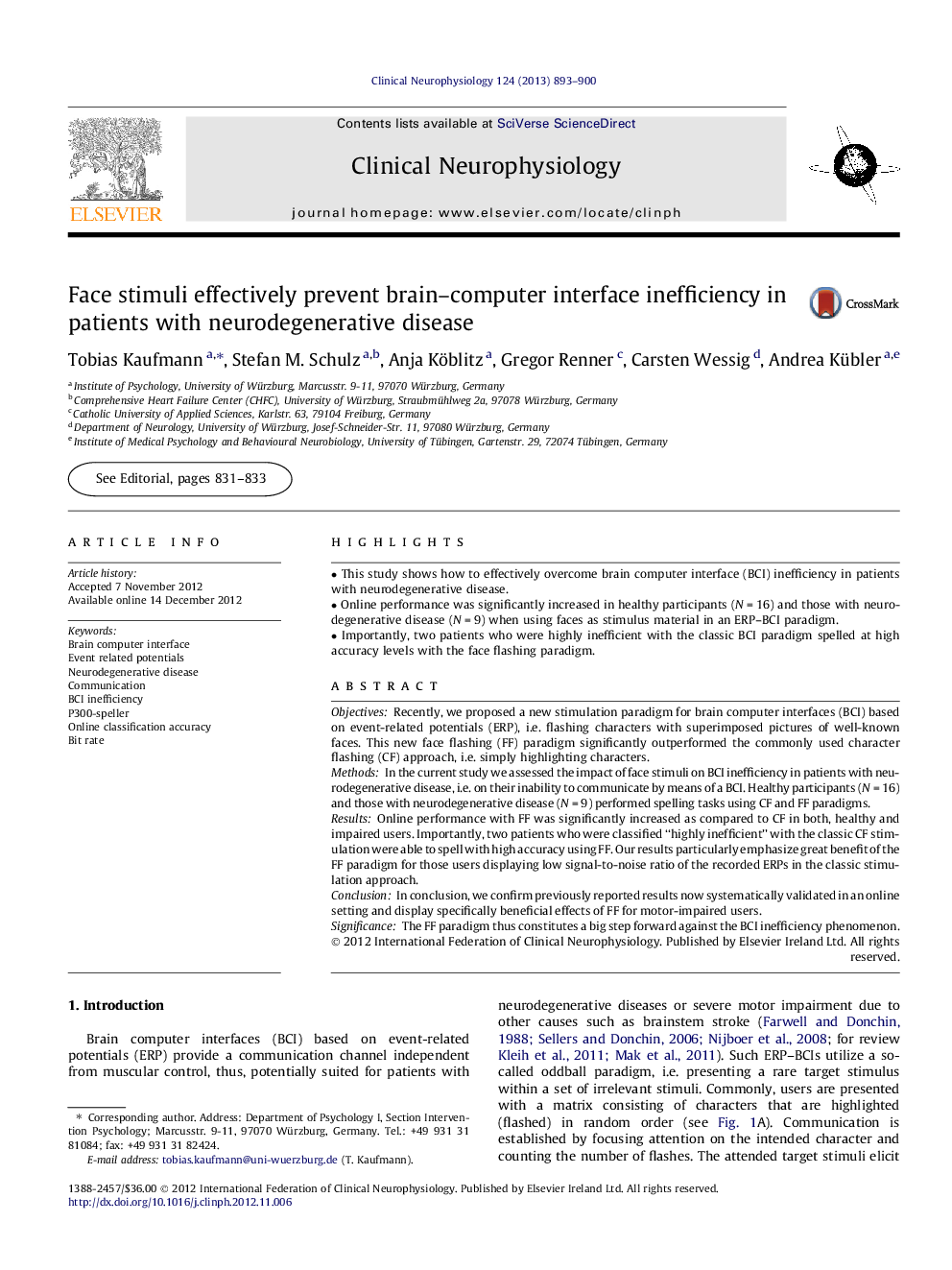| کد مقاله | کد نشریه | سال انتشار | مقاله انگلیسی | نسخه تمام متن |
|---|---|---|---|---|
| 3044328 | 1184997 | 2013 | 8 صفحه PDF | دانلود رایگان |

ObjectivesRecently, we proposed a new stimulation paradigm for brain computer interfaces (BCI) based on event-related potentials (ERP), i.e. flashing characters with superimposed pictures of well-known faces. This new face flashing (FF) paradigm significantly outperformed the commonly used character flashing (CF) approach, i.e. simply highlighting characters.MethodsIn the current study we assessed the impact of face stimuli on BCI inefficiency in patients with neurodegenerative disease, i.e. on their inability to communicate by means of a BCI. Healthy participants (N = 16) and those with neurodegenerative disease (N = 9) performed spelling tasks using CF and FF paradigms.ResultsOnline performance with FF was significantly increased as compared to CF in both, healthy and impaired users. Importantly, two patients who were classified “highly inefficient” with the classic CF stimulation were able to spell with high accuracy using FF. Our results particularly emphasize great benefit of the FF paradigm for those users displaying low signal-to-noise ratio of the recorded ERPs in the classic stimulation approach.ConclusionIn conclusion, we confirm previously reported results now systematically validated in an online setting and display specifically beneficial effects of FF for motor-impaired users.SignificanceThe FF paradigm thus constitutes a big step forward against the BCI inefficiency phenomenon.
► This study shows how to effectively overcome brain computer interface (BCI) inefficiency in patients with neurodegenerative disease.
► Online performance was significantly increased in healthy participants (N = 16) and those with neurodegenerative disease (N = 9) when using faces as stimulus material in an ERP–BCI paradigm.
► Importantly, two patients who were highly inefficient with the classic BCI paradigm spelled at high accuracy levels with the face flashing paradigm.
Journal: Clinical Neurophysiology - Volume 124, Issue 5, May 2013, Pages 893–900